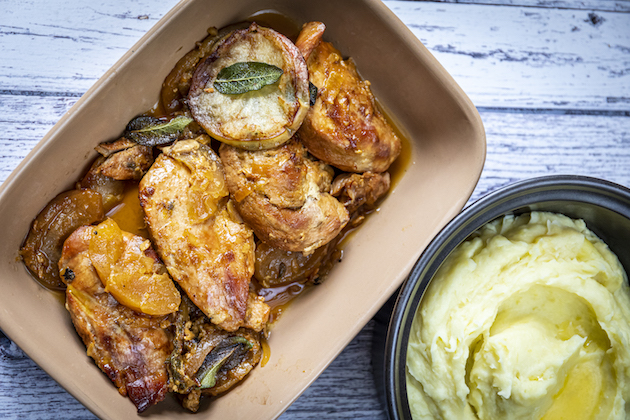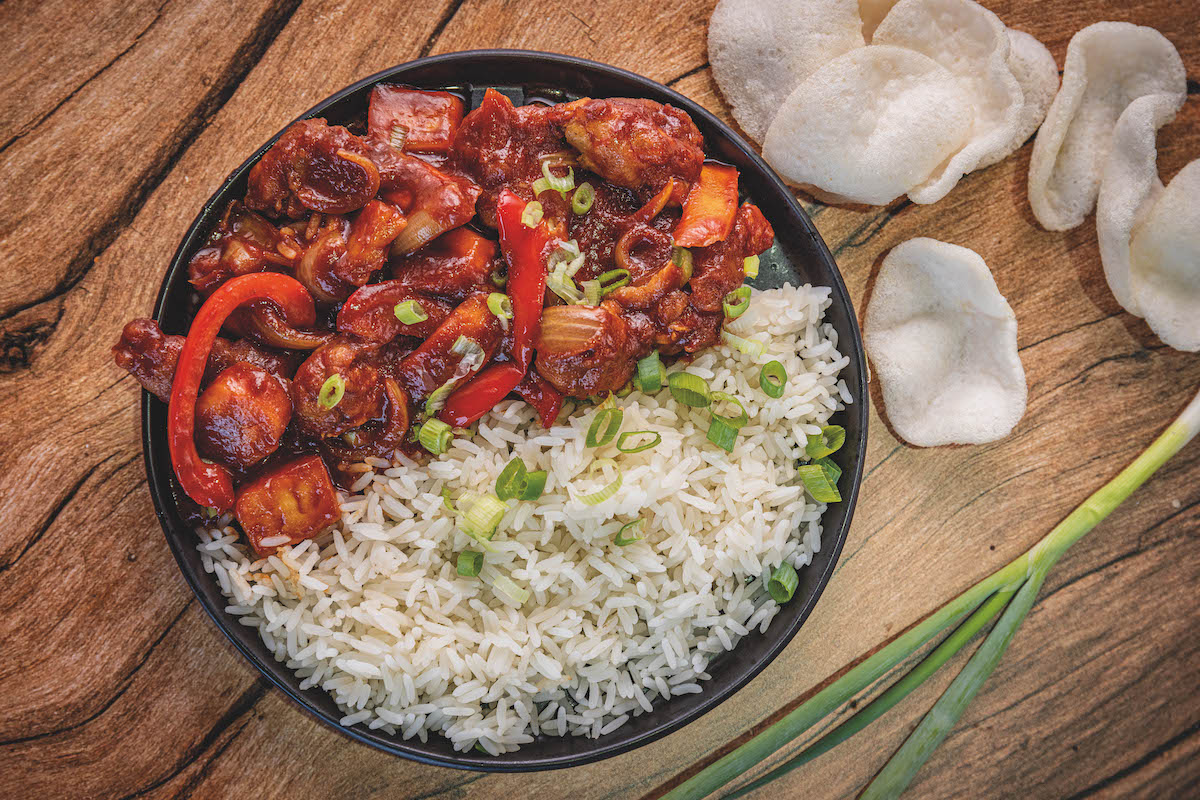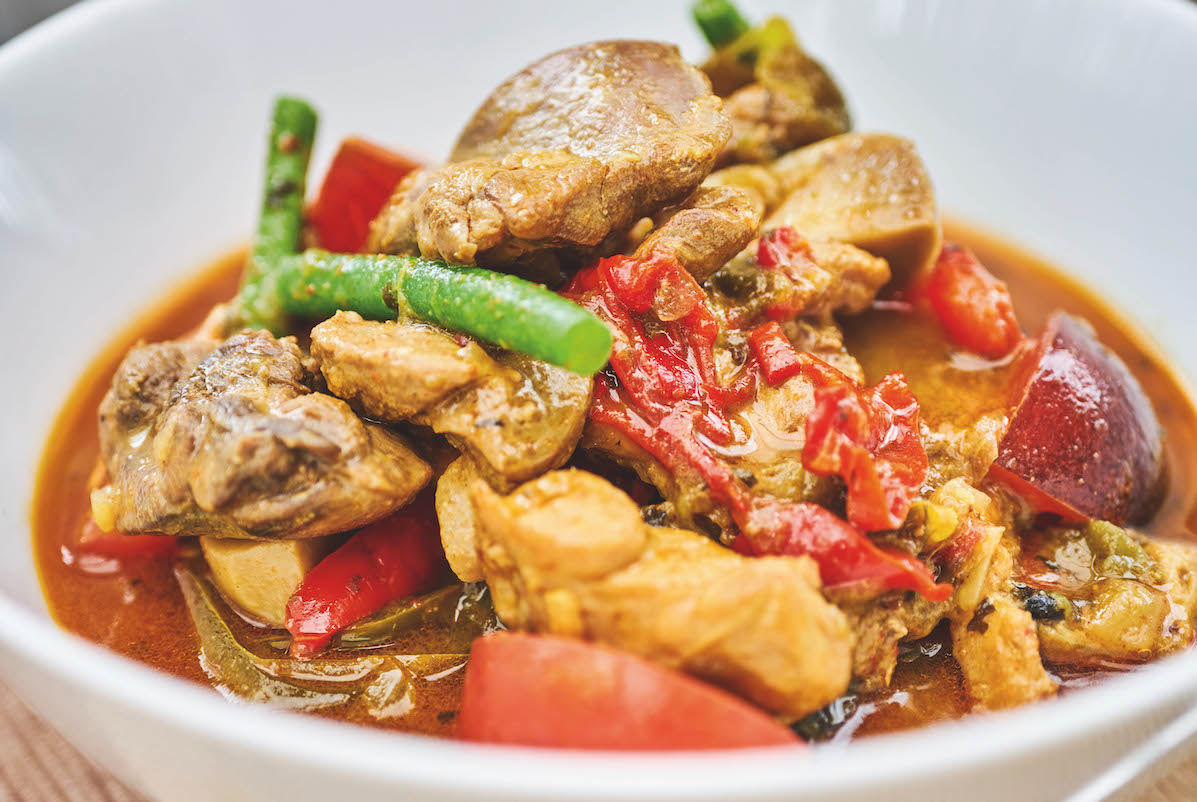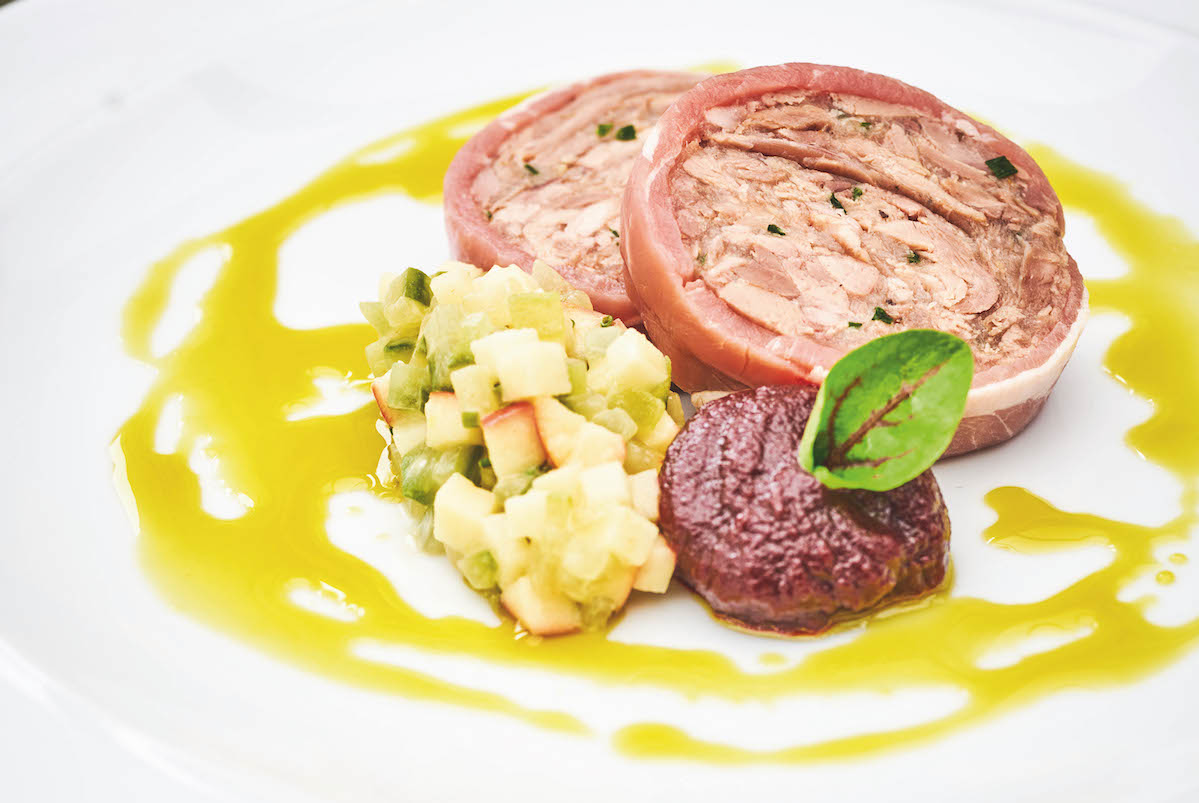Pheasant braised with apples and Somerset cider
This pheasant breast casserole is a wonderful winter warmer for a dinner party and also a great way to use up legs to create a delicious stock. Serves 4

Pheasant braised with apples and Somerset cider, with perfect pureed potato.
It would be dishonest not to admit that pheasants are the least easy game meat to slow-cook. I have chewed my way through plenty of dried-out meat in the past, cooked by myself and others.
Pheasant stew was a feature of my upbringing, since my father regularly shot, and it was not something I ever looked forward to. Perhaps the most off-putting aspect were those needle-like tendons poking out from the legs, a visual mess not helped by the sight of the birds’ scaly, amputated leg bones spiked.
There is a compromise that even provides a second meal. Our local butcher will divide pheasants into ‘supremes’ (breast meat on the bone with wing attached) and legs. The legs make a rich stock for this recipe and the meat can then be used for a number of other dishes.
The breasts, blissfully tendon- and feather-free, make an elegant pheasant cider casserole, sweetened by our local Somerset apples and brandy. Puréed potato goes beautifully. This is a recipe I learned from a Belgian cook when I was a teenager, and I have never used any other.
Ingredients
For the pheasant cider casserole:
- 4 pheasant legs
- 1 tbsp melted butter
- 1 tbsp skimmed milk powder
- 600ml traditional cider
- 2 tbsp duck fat
- 1 onion, finely chopped
- 2 cloves garlic, chopped
- 1 celery stick, finely chopped
- 2 rashers smoked streaky bacon, chopped
- 4 pheasant breasts on the bone (supremes)
- 2 tbsp Somerset cider brandy*
- Sea salt and freshly ground black pepper
- 2 tbsp butter
- 2 eating apples, cut into 1cm slices
- 12 sage leaves
For the puréed potato:
- 1kg mashing potatoes
- 300ml whole milk
- 100g butter
- Salt
*Available from The Somerset Cider Brandy Company
Method
- Preheat the oven to 180c. Put the pheasant legs into a roasting pan, add the melted butter and roll them around to coat thoroughly. Sprinkle over the skimmed milk powder – this is a chef’s trick that adds flavour and colour to stock in a natural way.
- Bake the pheasant legs for 30 minutes then remove from the oven, put them into a large pan with any juices and pour over the cider. Simmer for about 45 minutes to make a rich stock. Strain and set aside while preparing the rest of the dish. The meat from the pheasant legs can be used in a potato salad, noodle soup or added to a baked potato with some butter to make another meal.
- Melt half the duck fat in a casserole dish. Add the onion, garlic and celery and fry gently until softened but not coloured. Remove the vegetables from the pan with a slotted spoon, keeping them aside on a plate. Add the bacon and fry until crisp then remove and set aside with the vegetables.
- Wipe out the pan using kitchen paper, then add the remaining duck fat. Turn up the heat and brown the pheasant breasts on the skin side. Turn them and brown on the other side, turn down the heat then add the brandy.
- When the brandy boils add the vegetables and bacon. Cover with the stock you have made, then bring to simmering point. Allow to bubble very slowly for approximately 45 minutes to 1 hour, until the pheasant breast meat is tender. Add the seasoning to taste.
- Serve the braised pheasant with apples and sage leaves, fried in butter. Melt the butter in a shallow frying pan and fry the apples with the sage leaves, until the apples are soft and the sage leaves crisp.
- To make the puréed potato, peel the potatoes and cut each into 4. Boil until tender then drain for at least 10 minutes to dry them out. Put the milk and butter into the pan and bring to boiling point. Grate the potatoes or use a vegetable mill, straight into the heated milk. Reheat the purée, beating with a wooden spoon. Season the finished pheasant cider casserole with salt.
Pot roasted pheasant recipe by Rick Stein
Many will not associate Rick Stein with game so much as seafood but he is a master of all things…
Recipe for pheasant keema – perfect for feeding a large group of people
You may find, like I did, that this colourful spicy pheasant recipe fast becomes a household favourite. Once a kitchen…










